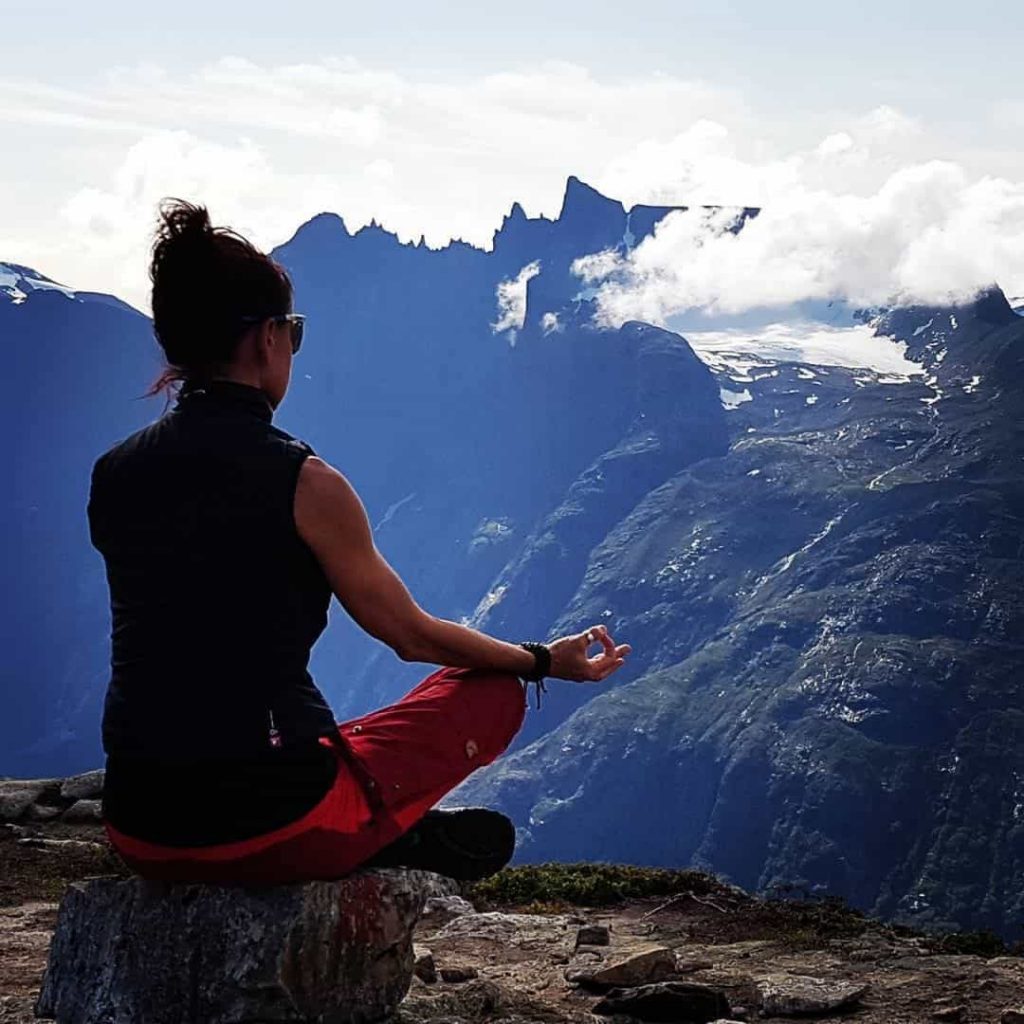In the summer of 2022, the first yoga and pilates teacher training will take place in Molde, Norway.
This Yoga and Pilates teacher training welcomes students who want to deepen their understanding of these two practices. Anyone who loves movement can learn and grow through this intensive 250-hour teacher training. Students may attend any of the three modules; both yoga teacher trainings are required to be eligible for registration with Yoga Alliance. Personal trainers, yoga practitioners, teachers, Pilates instructors, physiotherapists, and group fitness trainers, especially Les Mills Bodybalance and Bodyflow instructors will be able to enhance their personal practice and incorporate techniques they learn so they can teach a variety of classes without injury. The entire 250-hour teacher training is appropriate for beginners as well as intermediate and advanced students.
The 200-hour yoga teacher training will give a basic overview of different styles of yoga; as well as introducing the philosophy, and history of different styles. It will also prepare students to teach basic yoga poses and design around basic themes.
The Pilates module will teach the 50 preparation Pilates exercise and 34 original Pilates mat exercises in the correct order.
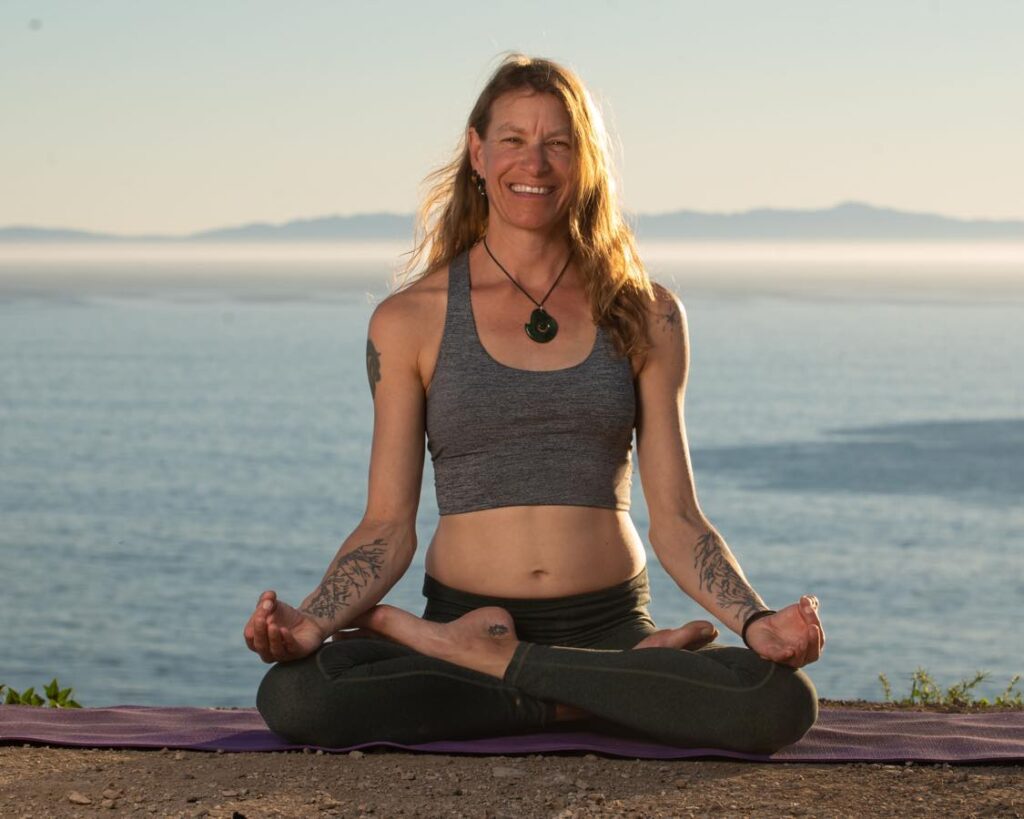
What is Yoga? And what is Pilates?
Yoga uses the body to connect with the mind and the inner self, while pilates uses mindfulness to connect to the inner workings of the body.
Yoga
Yoga was created in India thousands of years ago to connect the individual consciousness with the universal consciousness through physical activity. In short, it aims to not only improve your physical health but your emotional and spiritual health as well. Through repetitive movement, the act of yoga can be extremely therapeutic. In addition to being therapeutic, these movements focus on building flexibility and strength. Many types of yoga involve meditation at some point during the exercise. The meditative portion of yoga tends to attract people who are seeking to unwind from stressful situations.
Yoga is an integrated health management system using breath, movement, and meditation to unite the mind, body, and spirit. It also incorporates elements of philosophy, science, and an ethical way of living.
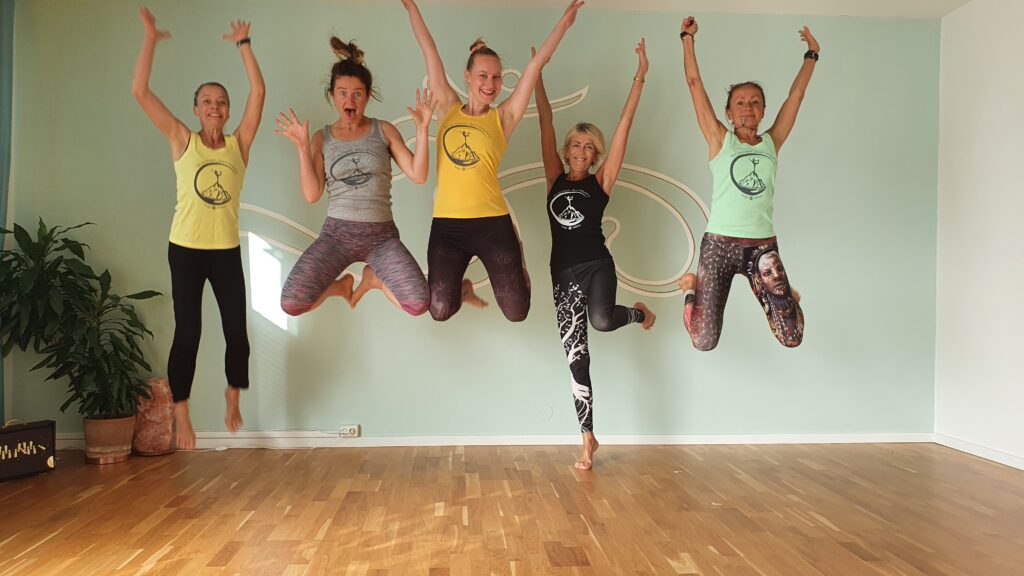

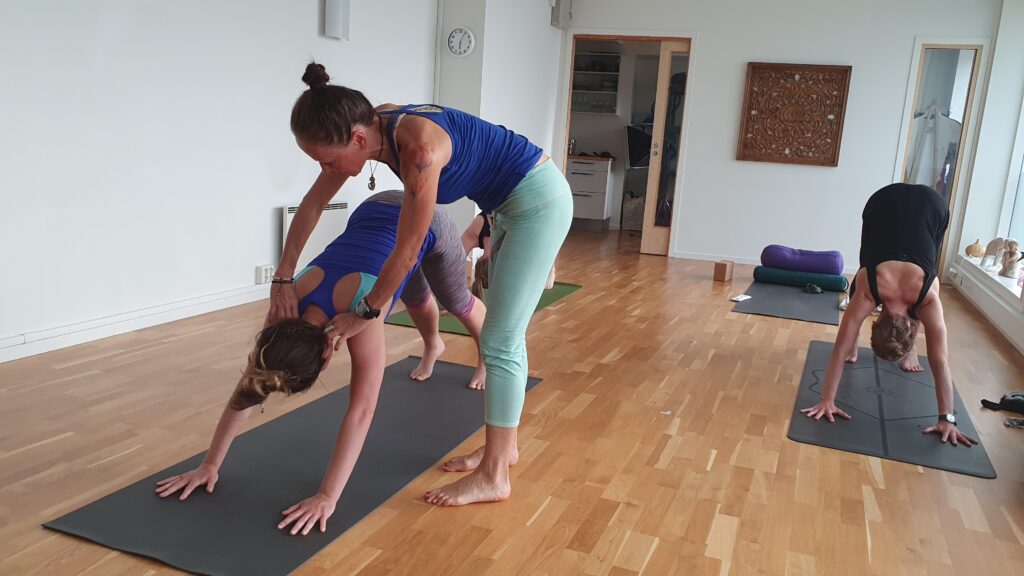
Pilates
Pilates was created in 1920 by German, Joseph Pilates for physical rehabilitation. Pilates aims to increase flexibility, strength, and body awareness. It is considered a resistance exercise, even though, as a beginner, you may experience an increased heart rate. Pilates has a full mat routine, in addition to exercises that can only be performed on specific Pilates machines, such as the reformer and the Cadillac.
The main goal of Pilates is to strengthen the core, improve posture, stabilize and elongate the spine and develop balance and overall strength.
Pilates works from the center of your body outward. It increases body awareness and core strength resulting in a more resilient body. Pilates is excellent for injury management. The gentle supportive movements are particularly useful for an aging population.
Yoga and eastern philosophy inspired much of Joseph Pilates’s technique. In his book Pilates’ Return to Life Through Contrology, he wrote that age is gauged not by years but by the suppleness of the spine. He also noted that full, deep breathing is a key component to efficient movement. And a stint on any Pilates mat reveals similarities between Pilates exercises and yoga asanas: Side Lift is much like Vasisthasana (Side Plank Pose), Roll Over is reminiscent of Halasana (Plow Pose), and Swimming could be mistaken for Salabhasana (Locust Pose).
Pilates’s focus on building and engaging a strong core can propel one’s yoga practice into new realms. This set of exercises can help yogis get stronger, avoid injury, and sometimes advance into poses that they hadn't previously thought possible.
Pilates Helps Yogis Engage Their Core!
This teacher training combines Pilates with yoga to transform your body and your daily routine.
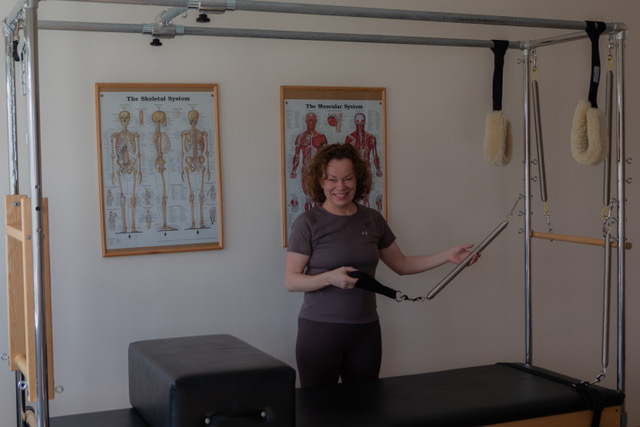
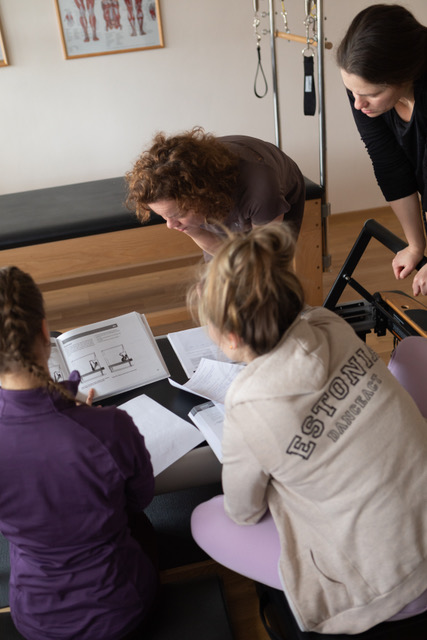
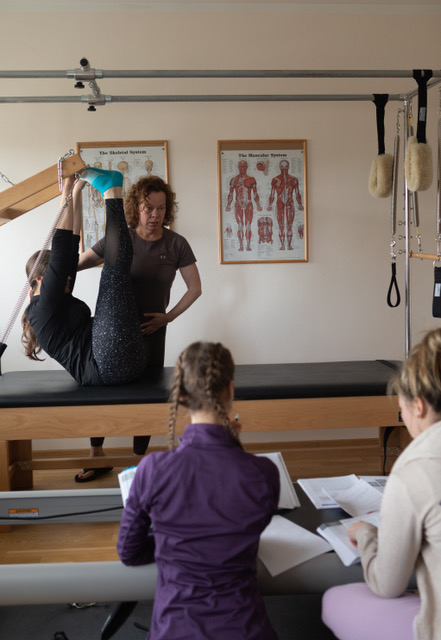
Difference between Yoga and Pilates
Yoga uses the body to connect with the mind and the inner self, while pilates uses mindfulness to connect to the inner workings of the body.
While yogis are instructed to either hold poses or flow through them in vinyasas, Pilates is a rhythmic practice of precise movements repeated five to 10 times for each exercise.
By focusing on targeted movements that develop core strength, Pilates can help yogis build a stable center, lengthen the side body, and increase awareness of alignment. The majority of the focus in Pilates routines is on the body’s powerhouse – the core. Strengthening the core creates stability, which improves balance in yoga poses and allows a student to hold asanas for longer periods of time. Strengthening the core muscles also brings safe alignment into yoga poses. The alignment of the limbs originates in the core. Improving alignment allows us to avoid injury and experience postures more ease. This comfort allows for effective energy channeling making every asana more fulfilling.
Although Pilates brings an intense focus to particular parts of the body – especially the core and the breath – Yoga fosters a deeper connection with all layers of the Self, including the mind. Developing the mind in this way will improve your entire life, as well as their Pilates practice. Students who can connect with each movement are more aware of what occurs throughout their bodies.
Stronger muscles always try and take control, especially if your core is weak. Developing deeper core strength through Pilates brings greater control – control over the center of gravity, movements, and where the tension lives in the body. For example, arm and shoulder strength are commonly overused in Chaturanga Dandasana (Low Plank pose). A stronger core allows the power to originate in the core, improving the asana itself while reducing fatigue, strain, and injury in the upper body.
Where Yoga immerses a student entirely in a full-body routine, Pilates allows them to isolate the body’s specific movement patterns. Many people have trouble understanding what is going on in their bodies. Learning through highly focused methods during Pilates can help people become more knowledgeable about each body part in isolation. For example, gaining an intimate understanding of the shoulder girdle or how the various joints in the hips and lower spine interact will improve your body’s engagement throughout your Yoga classes.
One difference between pilates and yoga is the ultimate goal. Yoga provides a meditative environment for you to improve your overall quality of life. It focuses on stress relief while improving your body.
Yoga concentrates mostly on large, functional movement patterns increasing the overall strength and flexibility of the spine and limbs.
In Yoga, the primary goal is the connection to breathe, using various pranayama techniques. Pilates focuses on building deep core strength first and teaches correct muscle activation, which can help alleviate back pain. Pilates also focuses on breathwork, but unlike yoga, the goal in Pilates is to engage deep abdominal muscles, building core strength and stability.
Pilates is known as a "workout," and yoga as a "practice". However, to improve at anything requires practice, and when practiced well both Pilates and yoga are exceptional workouts.
Yoga and Pilates can work together to strengthen the core, lengthen the side body, and improve your alignment.
We hope, you can join us in Norway from 01-16 June and 01-10 August 2022 to learn how you can combine these techniques to strengthen your personal practice and begin your teaching journey.
Yoga and Pilates Teacher Training in Norway, Molde 2022. More info here.
There are large variations in intensity between styles of yoga based on oxygen consumption and heart rate. Variation in intensity between yoga styles was due to the variability of what practitioners were doing over the whole arc of a yoga practice. Yoga practice could range from higher intensity sun salutations to lower intensity seated postures. A heated practice room, such as that in Bikram, and length of holding postures also contributed to differences in intensity ratings.
Students seek out a yoga class or practice for many different reasons. Additionally, what we mean by yoga varies considerably from one practice style to another. For these reasons, it can be helpful to identify some objective measures to describe individual yoga styles. This can help new practitioners make more informed choices about what yoga styles to begin with when they are starting out, based on what their intentions are with respect to starting a yoga practice.
Yoga is a versatile, variable tool that can have an impact on many different aspects of our well-being. We may seek out a yoga practice for many different reasons. So, it’s helpful to have a clearer picture of what individual styles of yoga offer. This article provides information about the physiological impacts of common styles of yoga practice. That can help us make choices about which style might be a good fit for us.
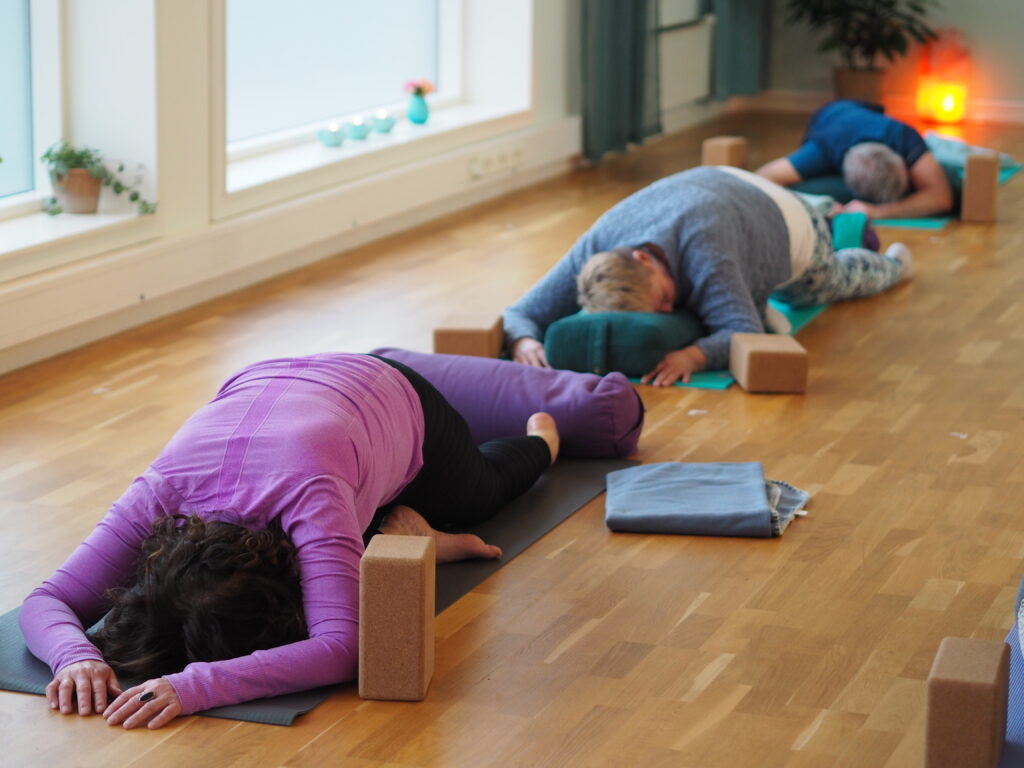
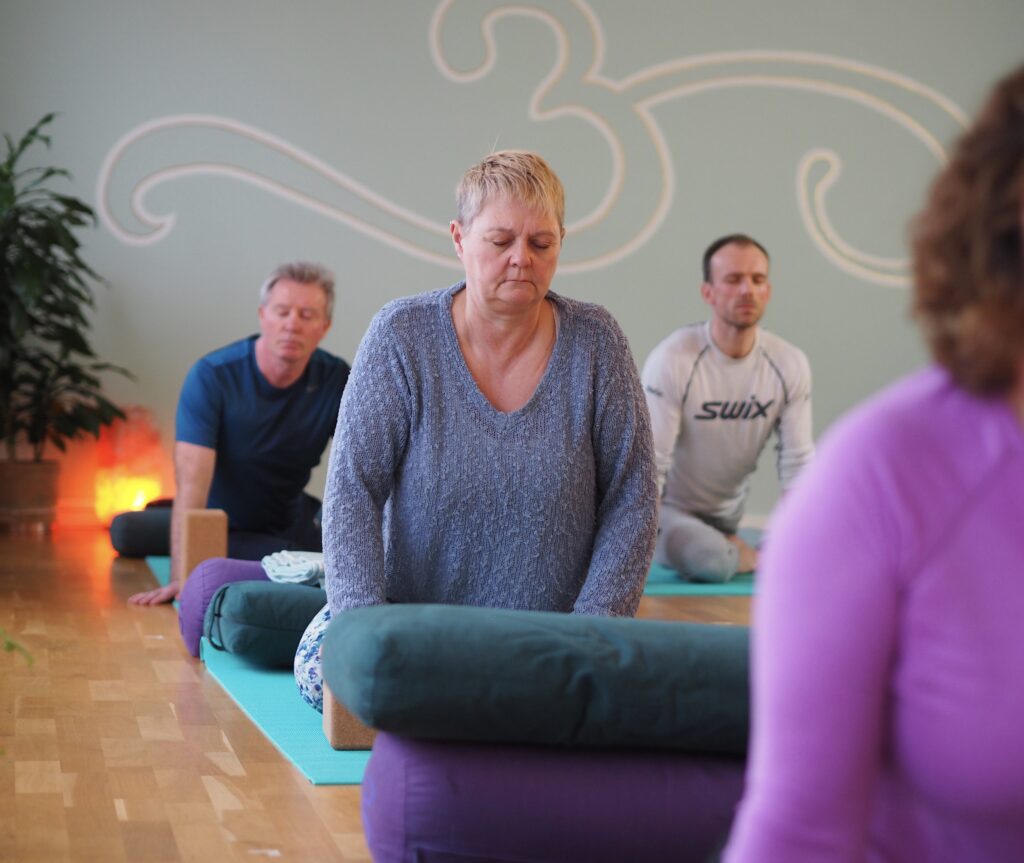
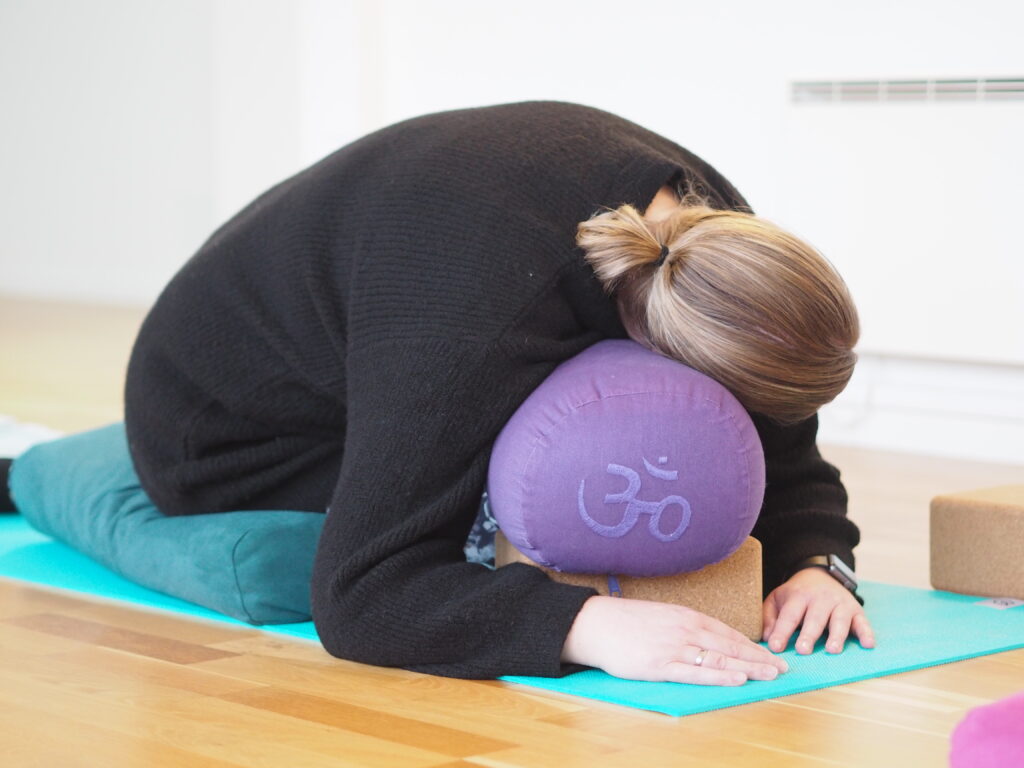
The intensity of yoga styles based on oxygen consumption:
- Hatha, Gentle or Soft Flow = light
- Yin = light
- Bikram = light
- Ashtanga, Vinyasa, Rocket = moderate
The intensity of yoga styles based on heart rate:
- Yin = light
- Bikram = vigorous
- Gentle = light
- Hatha = light/moderate
- Iyengar = light/vigorous
- Power = moderate
- Ashtanga, Vinyasa, Rocket = moderate
Ashtanga Vinyasa Yoga, Rocket Yoga and Vinyasa Flow
Ashtanga Vinyasa Yoga
is an ancient system of yoga. For each movement, there is one breath. Ashtanga Vinyasa Yoga is both a dynamically aerobic and meditative practice. It was primarily introduced to practitioners in the West by Shri K. Pattabhi Jois, a dedicated yogi, and Sanskrit scholar. As taught by Jois, Ashtanga Vinyasa Yoga is a form of Hatha Yoga that focuses on asana (posture), pranayama (breath control), and vinyasa (the linking of postures by breath and movement). An important part of Ashtanga Vinyasa Yoga is a deep sort of breathing we call ujjayi or victorious breath, bandhas or energy locks, and Drishti or our eye gaze.
Rocket Yoga
also known as "the Rocket" is a style of yoga, developed by Larry Schultz in San Fransisco during the 1980s. Rocket yoga is rooted in the practice of Ashtanga Vinyasa Yoga. It is composed of poses from the Primary and Intermediate series of Ashtanga. It was first called "Rocket" by Bob Weir because "it gets you there faster." Rocket Yoga is a dynamic and fast-paced flow of yoga. Students are encouraged to make their own interpretation of the traditional asana or can remove or modify binding postures that tend to cause students to get stuck in the traditional series. The Rocket is also divided into a three-part series: Rocket 1, Rocket 2, and Rocket 3. Each series focuses on targeted body strength and flexibility. Typically, Rocket 1 is practiced on Monday and Thursday, Rocket 2 on Tuesday and Wednesday, Rocket 3 on Friday, and Ashtanga Primary Series would be practiced on Sunday, and optionally on Thursday instead of Rocket 1. As in the tradition of Ashtanga Yoga, Saturday is the day to rest from physical forms of yoga. The Rocket 1 series is based on the Modified Primary Series. The Rocket 2 is based on the Intermediate series of Ashtanga Vinyasa Yoga. Rocket 3 (aka "Happy Hour" because you get two classes for one) is a combination of Rocket 1 and Rocket 2, practiced at a brisk pace to cover 90 poses in 90 minutes.
Vinyasa Flow Yoga
is also a dynamic yoga style but it can vary from soft to vigorous depending on the level of the group or student. Vinyasa Yoga is a teacher's interpretation of traditional yoga practice, based on the purpose of the class. If we want to emphasize that the class is slow-paced then we can call it Soft or Slow Vinyasa Flow or Gentle Flow. In a typical Slow Flow class, you will practice about half the number of poses you might practice in a Vinyasa Flow class. The pace is meditative, emphasizing peace and calm in body and mind. We hold poses longer, taking several rounds of breath in each pose, instead of moving to each breath. In that class, the asanas are practiced with an internal softness. You will focus on working in the poses using your breath, movement, and internal strength rather than the outer muscles. That type of Yoga is of medium intensity and the best way to start with your yoga practice to find out your preferences.
Yin Yoga
is a part of the original Hatha Yoga tradition. It combines the influences of Indian Yoga with Chinese Daoist practices and Western science to improve our health on many levels. With its emphasis on long-held, passive stresses of the deeper connective tissues, Yin Yoga mobilizes and strengthens our joints, ligaments, and deep facial networks. Most poses are done lying or sitting on a yoga mat or soft carpet and held for 2-5 minutes. In Yin Yoga class we're not stretching the tissue but rather, stressing it, and then allowing time for rest and repair. We are using the physical postures to help us in getting to a unity of the mind and the body. It is a platform for meditation. You can find a yin yoga video by clicking here.
Restorative yoga
is a deeply relaxing style of yoga practice. It is a receptive practice, not an active practice. Unlike the more active styles of yoga where poses "flow" into one another, restorative yoga poses are held from five to as long as twenty minutes. During this time, you are held in "shapes" while being supported with blankets, blocks, or bolsters (pillows). The shapes emulate the forms of some more active poses found in Ashtanga, Vinyasa, or Iyengar such as backbend, forward bend, twist, or inversion. When you are in the poses you are completely supported in a particular shape, which helps achieve the desired benefit - it could open up your lungs, release tension in your lower back, or any of the other physical or psychological benefits. In any style of yoga, part of the practice is about letting go of the ego. Restorative yoga is no different. Yoga teaches patience, devotion, and faith. When you apply the teachings both on and beyond the mat, your mind is better able to adjust to the stresses of everyday life and is brought into harmony with your body. You can find a restorative yoga video by clicking here.
Read more about yoga history, philosophy, and styles by clicking here.
The new solar year is upon us as the Earth begins to tilt back toward the Sun, signifying the completion of another life cycle before the emergence of spring. For thousands of years the Winter Solstice has been celebrated around the world—acknowledging the shortest day of the year as a return to light, a return to innocence; a rebirth along the wheel of life as the great world continues to spin.
During this cycle, we are invited to realign with our goals and ideals as we look toward the new year ahead—despite the chaos of the holiday season as the calendar turns.
Winter Solstice has been a time of celebration, rest, and emotional and physical nourishment for thousands of years.
Setting intentions at the winter solstic practice
As we lay out the framework for our plans, we are building a path that lights the way through the darkness of winter and guides us toward our brightest future. Through continued refinement of our goals, a willingness to understand that mistakes will be made and that we may need to change course along the way, intentions are little stepping stones that lead us like a compass toward our highest potential. An intention is the starting point of a dream; what makes the unconscious conscious. It is the creative power that fulfills our heart’s desires, be it career or relationships, money or material things, personal or spiritual ascension.
Solstice practice
Winter Solstice in the Northern hemisphere coincides with the sun’s ingress into earth-sign Capricorn, the sign traditionally aligned with the knees. Kneel in gratitude for your body, your practice, your life. Let saying the word knees be a kind of yogic mnemonic for thinking about your needs. Which ones really could use some attention now? While you are working on the answer to that question, please your knees in these poses, which connect you to Mother Earth.
Much like our yoga practices, our intentions are always in flow—and are changing from moment to moment. Through the ritual of practice, the intentions we set in motion will automatically become second nature, as old layers, habits, and selves begin to fall away in this great unraveling toward the Self; our truest nature. And like a seed, an intention must be planted, nourished, and given patience. But an intention cannot grow if we cling to it—it must be released outwardly to make itself known to the universe.
Activate your intentions for the new year by turning inward and awakening your inner fire; by learning to see in the dark. Think of the Winter Solstice as the fourth and final movement of your 2020 life-symphony. Synchronize your breath to movement that’s strong and intuitive. Go slowly, and let go of what no longer serves you so that you may clear the slate for all that is coming your way.
Estonia should be your next yoga retreat destination. Here's why
Estonia is a hidden gem packed with opportunities to try something new and have experiences you would not have in most other countries.
Estonia has a long history of different settlers from Vikings to the medieval merchants of German, Swedish, Danish and Russian descent. Today’s Estonia is an exciting mix of old and new. The capital Tallinn is the best preserved medieval city in Northern Europe and its Old Town is listed as a UNESCO cultural heritage sight. At the same time, it is a bubbling and innovative city filled with trendy cafes, restaurants, and shops. Driving out of the city for only an hour and you will find yourself in wild nature.
If you want to combine a relaxing yoga holiday in nature but also experience some of the rich cultural life in a historical setting – Estonia is the perfect holiday destination for you. Estonia is a very compact country so you can cover a lot in just a week.

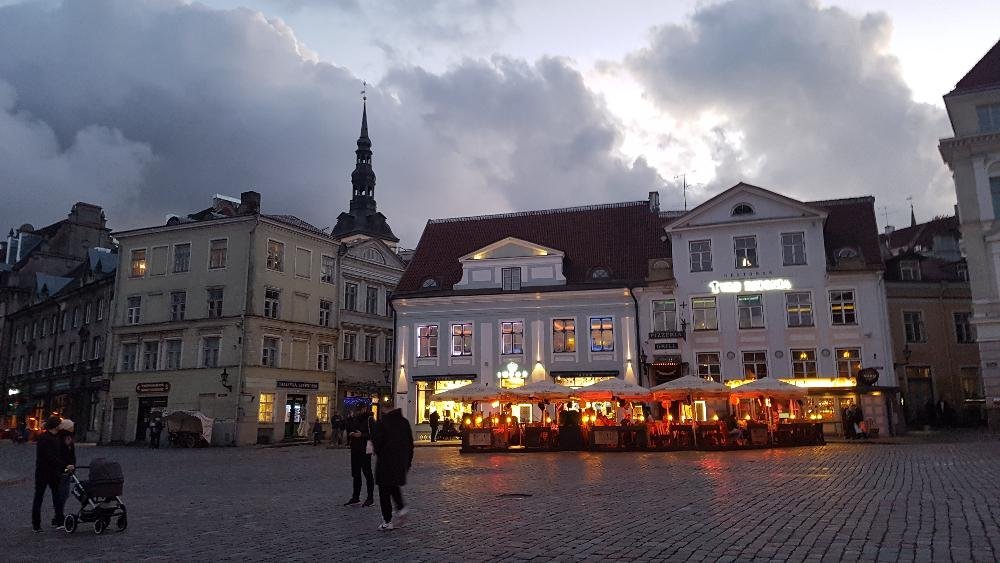
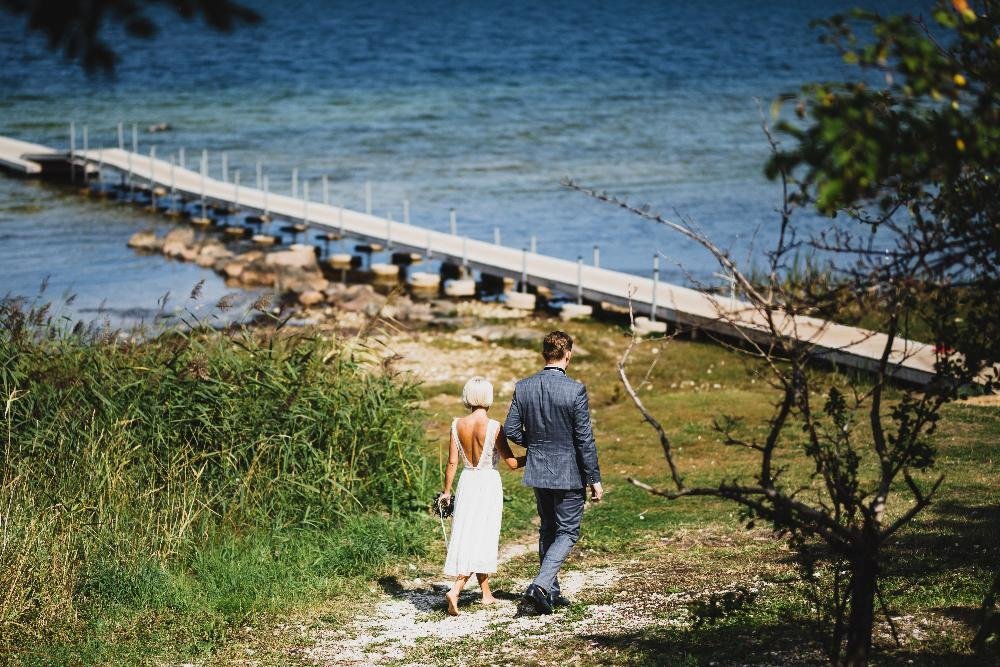
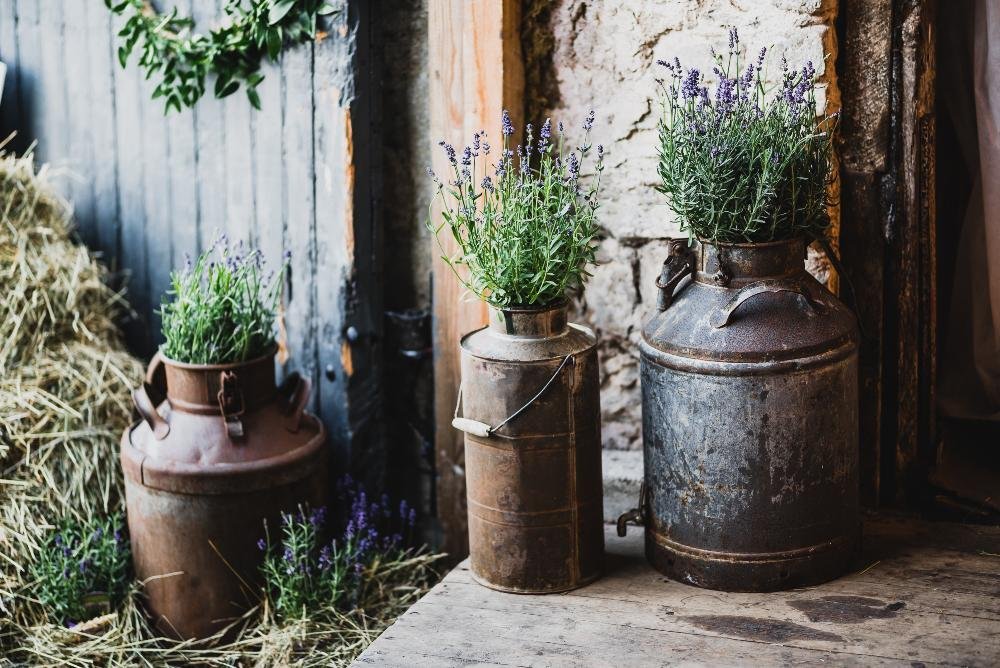
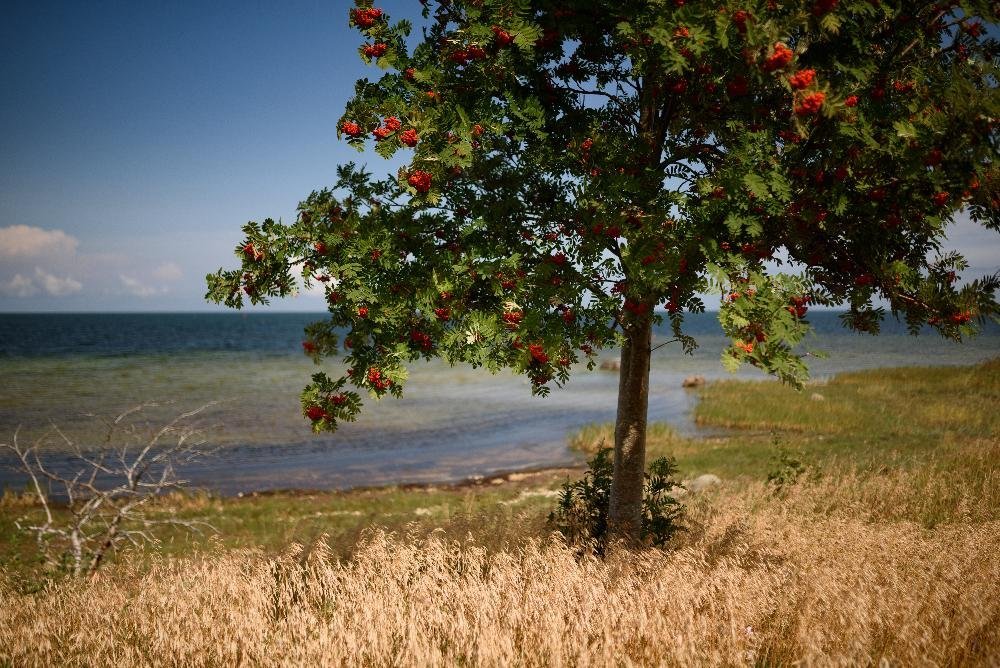
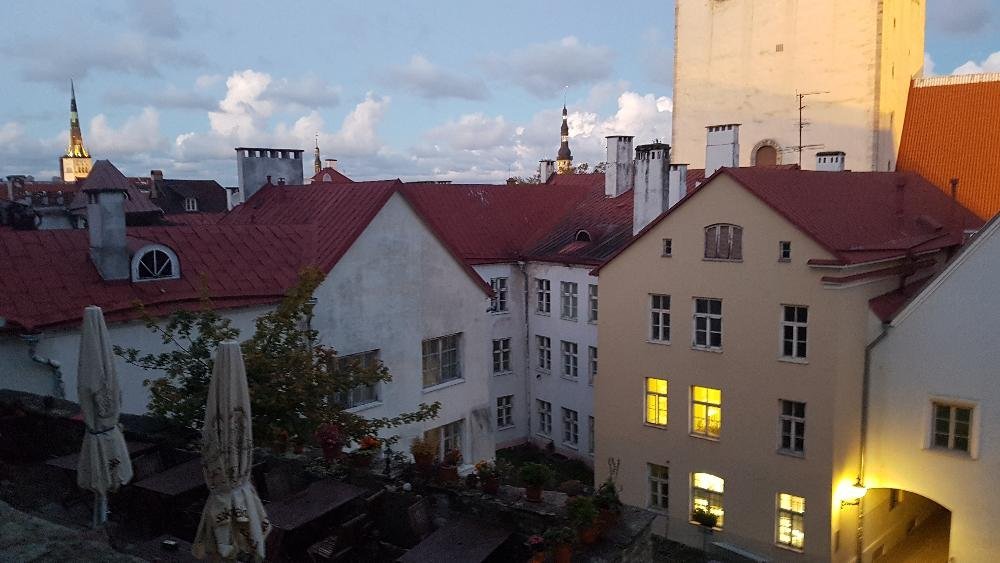
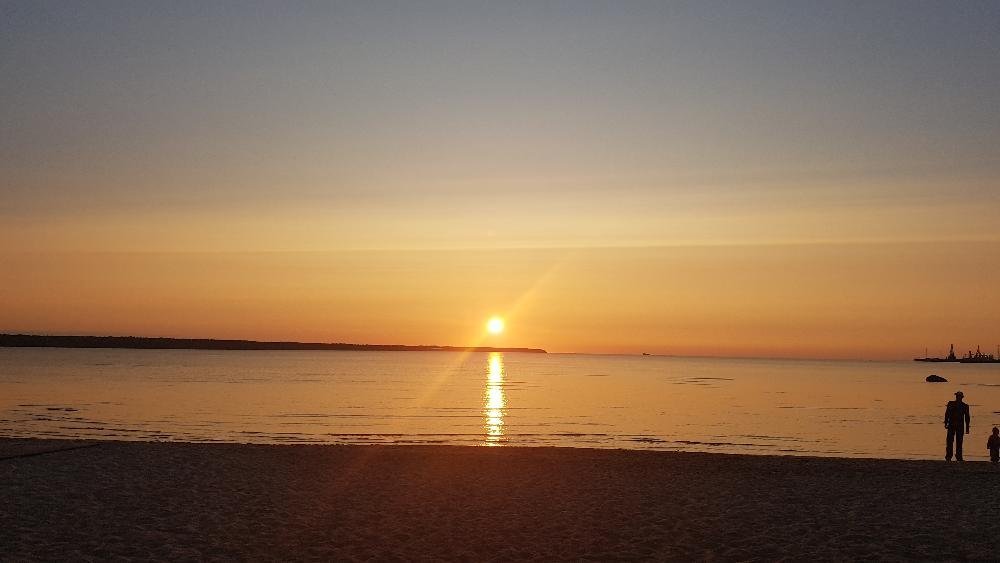
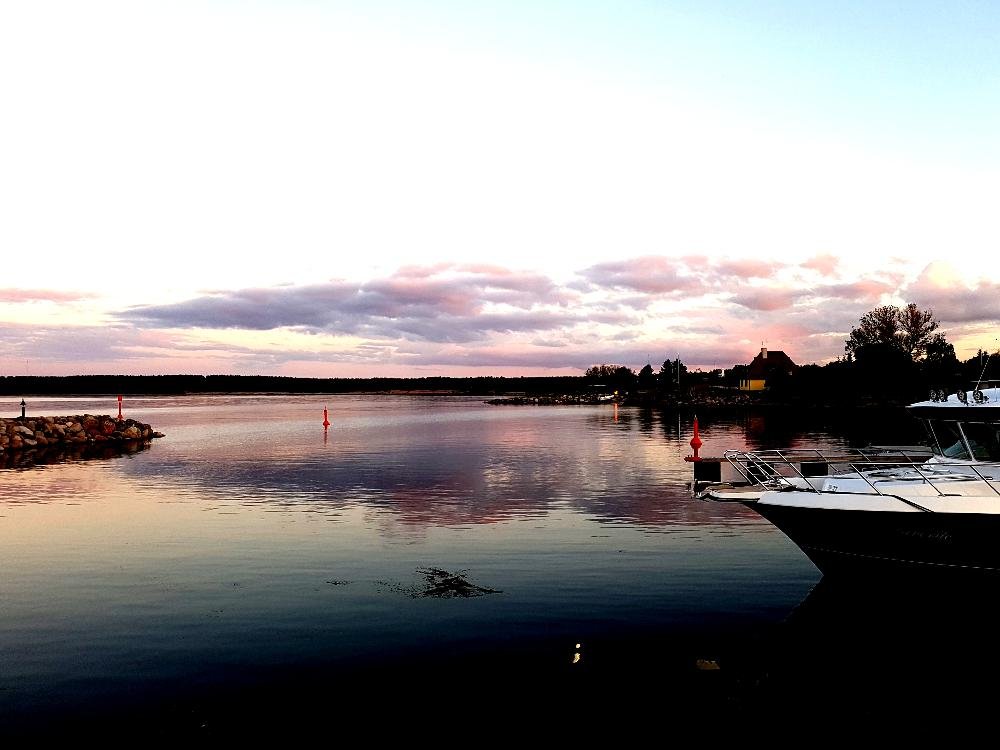
A Yoga Retreat in Estonia will offer you:
- A relaxing week staying in a spa in a small seaside village near the capital Tallinn. It is a perfect location for a getaway to recharge your batteries, enjoy massages, saunas or other wellness and beauty treatments, sunbathe and swim in the sandy beaches.
- A chance to discover the spectacular nature of Estonia. The country is famous for its untouched wild nature and especially its beautiful bogs. You can have a once in a lifetime experience by visiting a bog on sunrise – the unique landscape with sun rays slowly emerging through the morning mist is something that you will never forget. At the end of the trail you can enjoy the view from a watchtower or take a refreshing dip in the lake.
- An acquaintance with the culture and history of Tallinn. The retreat will take place near the capital Tallinn, so there will be several options to discover its rich cultural scene. Tallinn offers a versatile experience to anyone interested in architecture, history, design and handicrafts as well as to foodies who are looking for great culinary experiences.
- New friends among like-minded people (solo travelers are welcome!), time for yourself to relax and rewind, lots of yoga and physical activity outdoors, healthy and tasty food. What else could you want from a holiday?
You will be accompanied by a local guide Pille, who was born and raised in Estonia. She will guide you through the yoga lessons, take you to the local’s favorite places that you won’t find in a travel guide and help you with everything you might need for a comfortable stay.
Read more about our Estonian yoga retreat by clicking here.
What is Sun Salutation and why we practice it
Surya - the Sun, soul, source of all life
Namaskar - greening or salute
Sun Salutation originated in the Hatha Yoga tradition in the 9 century in India. Many variations are possible. Surya Namaskar is a series of postures (asanas in Sanskrit) linked together in a graceful flow. It can be a complete practice in and of itself or used to warm up and prepare the body before your yoga practice. In Ashtanga Yoga there are Sun Salutation A and B which are slightly different from Hatha yoga Sun Salutation. It is a beautiful greeting, but it was also meant to be a transformative experience to release the burden of our personal obsessions and just come back to the essence, The power of a Namaskar is in its refined simplicity; the combination of movements creates a physical, mental, emotional, and spiritual syncopation. In ancient times people would practice Surya Namaskar at sunrise, facing the Sun in the East.
The Benefits of Sun Salutations:
- Increases blood circulation
- Boost energy
- Unwind the mind – find your center
- Find gratitude
- Creates more strength, flexibility, and tone to the body
- Opens and releases tension in the hamstrings, shoulders, and the chest
- Offers great release of tension on the spine as well as helps lengthen the spine
- Lubricates the joints
- Ensures Heart Health
- Great for the Lungs
- Boosts Immunity
- Becomes meditative through the motions - a prayer in motion
- Aids in weight loss
- Improves digestion
- Calms the nervous system
- Improves kidney function
Want to start with yoga? Free course for beginners here.
The breath- it’s the only thing that’s with you from the moment you’re born to the moment you pass. Breathing unites the body and mind together and can change the way you feel mentally, emotionally, and physically. Although breathing is a spontaneous process, conscious control of it may be taken to learn and develop correct and deep breathing techniques. Rhythmic, deep, and slow breathing exercises result in establishing the natural, relaxed rhythms of the body and mind. Breathing consciously is the essence of yoga as it assists us in connecting with the subtle energy within. It is through the breath that we can navigate different levels of consciousness.
Firstly, connecting with your breath is a method for being present. When you concentrate on each aspect of the breathing process, you are present; you let go of the past and future and are focused on the moment inside the breath. This is why breathing consciously is its meditation. By changing the breathing pattern, you can produce different states of mind. Slowing down the breath has an impact on your emotional state.
The breath is the most vital process of the body. It influences the activities of every cell and, most importantly, is intimately linked with the performance of the brain. Human beings breathe about 15 times per minute and 21,600 times per day. Respiration fuels the burning of oxygen and glucose, producing energy to power every muscular contraction, glandular secretion, and mental process. The breath is intimately linked to all aspects of human experience.
Most people breathe incorrectly, using only a small part of their lung capacity. The breathing is then generally shallow, depriving the body of oxygen and prana essential to its good health. Although breathing is mainly an unconscious process, conscious control of it may be taken at any time. Consequently, it forms a bridge between the conscious and unconscious areas of the mind.
Yogic breathing combines ABDOMINAL (or diaphragmatic), THORACIC, and CLAVICULAR breathing.
It is used to maximize inhalation and exhalation. Its purpose is to gain control of the breath, correct poor breathing habits, and increase oxygen intake.
It may be practiced at any time and is especially useful in situations of high stress or anger for calming the nerves. However, while its inclusion in a daily yoga program will correct and deepen natural breathing patterns, yogic breathing itself should not be performed continually.
Abdominal breathing. Inhale while expanding the abdomen as much as is comfortable, without expanding the ribcage. At the end of the inhalation, the diaphragm will be compressing the abdomen and the navel will be at its highest point. On an exhalation, the diaphragm moves upward and the abdomen will be contracted and the navel compressed towards the spine.
Thoracic breathing. Concentrate on the sides of the chest. Discontinue any further use of the diaphragm and begin to inhale by slowly expanding the ribcage. Feel the movement of the individual ribs outwards and upward, and be aware of this expansion drawing air into the lungs. Expand the chest as much as possible. Exhale by relaxing the chest muscles. Feel the ribcage contracting and forcing the air out of the lungs. Do not use the diaphragm.
Clavicular breathing. Clavicular breathing is breathing into the top third of the lungs and no deeper. Clavicular breathing is accomplished by raising the collarbone (clavicle) and shoulders during the in-breath and keeping the rest of the torso motionless. Clavicular breathing is the most shallow type of breathing. It brings oxygen into only the top third of your lungs.
How to learn and practice yogic breathing
- Sit in a meditation posture or lie in Shavasana and relax the whole body
- Inhale slowly and deeply, allowing the abdomen to expand fully
- Try to breathe so slowly that little or no sound of the breath can be heard
- Feel the air reaching into the bottom of the lungs
- At the end of the abdominal expansion, start to expand the chest outward and upward
- When the ribs are fully expanded, inhale a little more until the expansion is felt in the upper portion of the lungs around the base of the neck. The shoulders and collarbone should also move up slightly. Some tension will be felt in the neck muscles. The rest of the body should be relaxed.
- Feel the air filling the upper lobes of the lungs
This completes one inhalation. The whole process should be one continuous movement, each phase of breathing merging into the next without any obvious transition point. There should be no jerks or unnecessary strain. The breathing should be like the swell of the sea. Now start to exhale.
- First, relax the lower neck and upper chest, then allow the chest to contract downward and then inward.
- Next, allow the diaphragm to push upward and toward the chest.
- Without straining, try to empty the lungs as much as possible by drawing or pulling the abdominal wall as near as possible to the spine. The entire movement should be harmonious and flowing.
- Hold your breath for a few seconds at the end of exhalation.
- This completes one round of yogic breathing.
This completes one round of yogic breathing. At first, perform 5 to 10 rounds and slowly increase to 10 minutes daily. Relax any effort and once again watch the spontaneous breathing pattern. Bring the awareness back to observing the physical body as a whole. Be aware of the surroundings and gently open your eyes.
Consequently, once awareness and control of the breathing process have been established, the clavicular technique is dropped and yogic breathing is modified to become a combination of abdominal and thoracic breathing. The breath should flow naturally and not be forced.
Read the blog post about Pranayama by clicking here.
Yogic breathing for beginners 12-minute YouTube video here.
Yogic breathing for beginners part 2 Ujjayi breathing YouTube video here.
Practice with me link is here.
